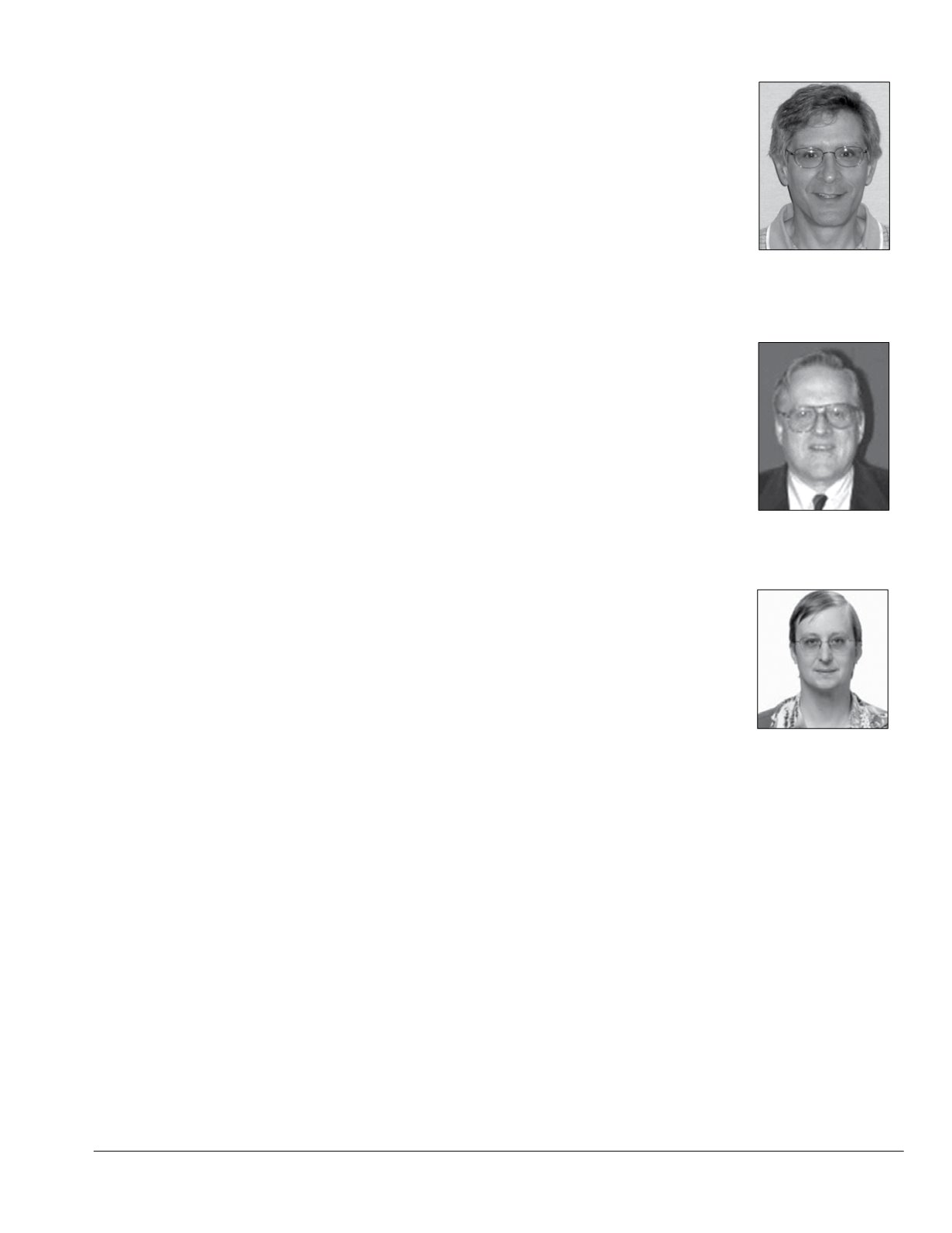
19
Plenaries
The Physics of Baseball
Tuesday, July 16, 9–10 a.m. • Grand Ballroom I
“You Can Observe a lot by Watching” –
Yogi Berra
Alan M. Nathan,
Prof. Emeritus, University of Illinois at Urbana-Champaign, will give a
plenary presentation entitled “ ‘You Can Observe a Lot by Watching’ – Yogi Berra.” Following
Yogi’s advice, Nathan will use high-speed video clips to highlight some of the interesting physics
underlying the game of baseball. The talk will focus on the subtleties of the baseball-bat colli-
sion, the intricacies of the flight of a baseball, and many other things. Nathan will also lead a
workshop, “Major League Physics – Using Baseball to Teach Physics.”
After a long career doing
things like measuring the electric and magnetic “polarizabilities” of the proton and studying the
quark structure of nucleons, he now devotes his time and effort to the physics of baseball. He
maintains an oft-visited website devoted to that subject:
.
APS Plenary: Producing Superheavy Elements
Tuesday, July 16, 2–3:30 p.m. • Grand Ballroom I
1. The Quest for Superheavy Elements:
W. Loveland
, Oregon State University
Walter Loveland,
Professor of Chemistry, Oregon State University, Corvallis, OR, received his
SB in Chemistry at MIT in 1961, his PhD in Nuclear Chemistry at Univ. of Washington in 1966.
He is chair of the ACS Div. Of Nucl Chemistry and Technology, Users Executive Committee
NSCL, 88-Inch Cyclotron. Awards: NSF Fellow (Washington), Sigma Xi, N.L. Tartar Fellow
(Oregon State), Sigma Xi Award for Research, Oregon State. F.A. Gilfillan Award for Research,
Beaver Champion Award.
He will examine the current status of heavy element research. Among the questions addressed
are: Why are heavy elements important? What is their unique role in chemistry? How has the
Periodic Table evolved with time and what are the limits of the Periodic Table? How do you
make new heavy nuclei? How does one do chemistry one atom at a time? What are the pros-
pects for the synthesis of new heavy nuclei? What are the new ways of studying the atomic phys-
ics and chemistry of the heaviest elements?
2. Exploring the Limits of Nuclear Stability: Glimpsing the Island of Stability:
Mark A. Stoyer,
Lawrence Livermore National Laboratory
Mark A. Stoyer
obtained a BS in Chemistry from Purdue University in December 1984. He
worked as Undergraduate Research Assistant at LLNL Jan. 1985–Aug. 1985. he obtained a PhD
in Chemistry (Nuclear) from University of California, Berkeley in November 1990. Staff scien-
tist at LLNL 1995-present. Senior staff scientist at LLNL from 2003-present. Current position
(Feb. 2007-present).
The Dubna/LLNL collaboration has been investigating the nuclear and chemical properties
of the heaviest elements since 1989. Elements 113-118 have been synthesized and character-
ized using fusion-evaporation nuclear reactions of 48Ca beams on actinide targets (237Np,
242,244Pu, 243Am, 245,248Cm, 249Bk, and 249Cf, respectively) at the U400 cyclotron located
at the Flerov Laboratory of Nuclear Reactions in Dubna, Russia. This talk will discuss the
ramifications of the experimental work during the last 1015 years on the synthesis of elements
113–118, including the recent IUPAC acceptance of element names for 114 (flerovium) and 116
(livermorium). Prediction of the heaviest element possible is highly uncertain because of the
complex interplay of strong nuclear forces, Coulomb forces, surface/volume effects, and shell
corrections. For some combination of protons (Z > 118) and neutrons, the strong nuclear force
which binds nucleons together will not be able to counter the Coulomb repulsion of the protons
in a nucleus, and thus nuclei will cease to exist. Experimental and theoretical efforts to locate
and access the next region of doubly-magic spherically-shaped nuclei, the Island of Stability, will
be presented.
(
This work performed under the auspices of the U.S. Department of Energy by Lawrence Livermore
National Laboratory under Contract DE-AC52-07NA27344.)
Alan M. Nathan
University of IIllinois at
Urbana-Champaign
July 13-17, 2013
Walter Loveland
Oregon State Univer-
sity, Corvallis, OR
Mark A. Stoyer
Lawrence Livermore
National Laboratory


